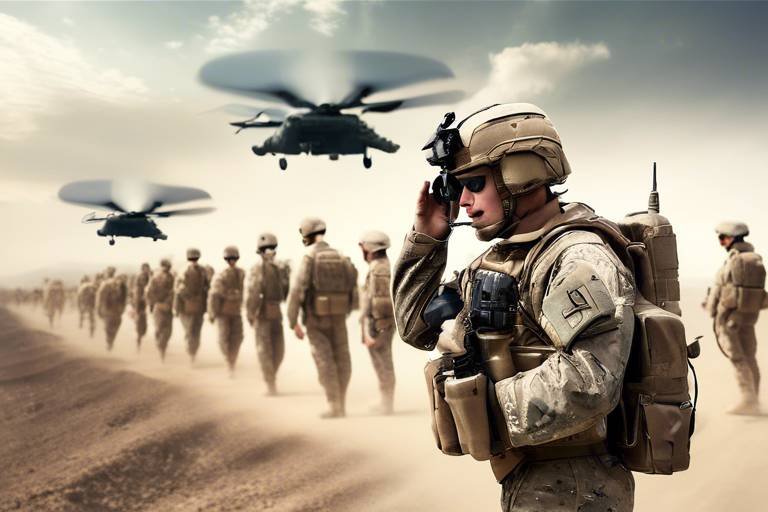How Virtual Reality is Changing Combat Simulation
In recent years, virtual reality (VR) has emerged as a groundbreaking tool in various fields, and its impact on combat simulation is nothing short of revolutionary. Imagine stepping into a world where you can practice life-and-death scenarios without any real-world consequences. That’s the power of VR in military training. It’s not just about playing video games; it’s about immersive experiences that prepare soldiers for the complexities of modern warfare. As we delve deeper into this topic, we’ll explore how VR is reshaping the landscape of military preparedness, enhancing training methods, and ultimately saving lives.
One of the most significant advantages of VR technology is its ability to provide immersive training scenarios. Traditional training methods often involve static environments that can’t replicate the chaos and unpredictability of real combat. With VR, soldiers can engage in realistic simulations that mimic various terrains, weather conditions, and enemy tactics. This level of immersion not only enhances the learning experience but also builds confidence. Soldiers can practice maneuvers and tactics in a safe environment, reducing the risks associated with live training exercises while still gaining valuable experience.
VR technology allows for the creation of combat simulations that mirror real-world conditions. Whether it’s navigating through urban warfare or conducting operations in dense forests, the scenarios can be tailored to reflect the challenges soldiers may face. This adaptability is crucial for effective training. For instance, a soldier might encounter a situation where they need to make split-second decisions under fire. With VR, they can experience these high-pressure environments repeatedly, honing their skills and reflexes. The ability to practice in such realistic settings is invaluable.
One of the standout features of VR training systems is their capacity for adaptive learning. Each soldier has unique strengths and weaknesses, and VR can cater to these individual learning styles. The system can provide personalized feedback, adjusting scenarios based on performance. For example, if a soldier struggles with marksmanship, the VR training can focus more on shooting drills, ensuring that they receive the practice they need to improve. This tailored approach not only enhances skill development but also boosts motivation and engagement.
Instructors can easily customize training scenarios in a VR environment, tailoring them to specific missions or objectives. This level of customization ensures that training is relevant and effective. Imagine a unit preparing for a deployment; they can rehearse specific operations in the exact conditions they expect to encounter. This not only prepares them physically but also mentally, allowing them to visualize success before stepping onto the battlefield.
The integration of artificial intelligence (AI) into VR simulations takes training to another level. AI can create dynamic opponents that adapt to the soldiers’ strategies, making each training session unique and challenging. This unpredictability is essential for preparing soldiers to think on their feet and adjust their tactics in real-time. In essence, the combination of VR and AI creates a training environment that is not only realistic but also incredibly engaging.
Another critical aspect of combat training is the ability to perform under stress. VR can simulate high-stress situations, allowing soldiers to practice decision-making under pressure. For instance, they might face a scenario where they need to make a quick choice about whether to engage an enemy or retreat. These simulations can replicate the physical sensations of stress, such as increased heart rate and adrenaline, providing a comprehensive training experience that prepares soldiers for the realities of combat.
Implementing VR technology in combat simulations can significantly reduce costs associated with traditional training methods. Live exercises often require expensive logistics, including travel, accommodation, and ammunition. With VR, military organizations can conduct high-quality training experiences without these extensive expenses. This cost-effectiveness allows for better resource allocation, focusing on critical training needs without compromising quality.
By utilizing VR, military organizations can allocate resources more efficiently. Traditional training methods often demand extensive logistical support, which can divert attention from actual training. With VR, the emphasis shifts to training effectiveness rather than logistical hurdles. This streamlined approach not only saves money but also enhances the overall training experience for soldiers.
Investing in VR technology can lead to significant long-term savings. By minimizing wear and tear on equipment and reducing travel costs for training exercises, the military can allocate funds to other critical areas. Moreover, the ability to conduct training sessions at any time means that soldiers can stay sharp without the need for extensive planning and resources.
As technology continues to evolve, the future of VR in combat simulation looks incredibly promising. Advancements in graphics, interactivity, and realism are set to revolutionize military training even further. Imagine a future where soldiers can train in virtual environments that are indistinguishable from reality, complete with realistic soundscapes and tactile feedback. The possibilities are endless, and the potential for improving military preparedness is vast.
- What is virtual reality in combat simulation? - VR in combat simulation refers to the use of immersive technology to create realistic training environments for military personnel.
- How does VR improve training for soldiers? - VR enhances training by providing realistic scenarios, personalized feedback, and the ability to practice in high-stress situations without real-world risks.
- Is VR training cost-effective? - Yes, VR training can significantly reduce costs associated with traditional training methods, such as travel and ammunition.
- What role does AI play in VR combat training? - AI can create dynamic opponents and scenarios that adapt to a soldier's performance, enhancing the realism and challenge of the training.

Enhanced Training Experiences
Virtual reality (VR) is not just a buzzword; it's a revolutionary tool that is reshaping how soldiers undergo training. Imagine stepping into a world where every sound, sight, and sensation mimics the battlefield without the actual danger. This is what VR brings to the table. By creating immersive training scenarios, VR allows soldiers to engage in lifelike experiences that significantly enhance their learning. Instead of merely reading about combat tactics in a textbook or watching videos, trainees can now actively participate in simulated environments that closely resemble real combat situations.
The beauty of VR training lies in its ability to eliminate risks associated with traditional training exercises. Soldiers can practice maneuvers, strategize in groups, and even face off against virtual enemies without the fear of injury or the logistical challenges of live exercises. This means that they can train more frequently and effectively, honing their skills in a safe space where mistakes are just stepping stones to success. Imagine a soldier learning to handle a weapon or navigate a complex terrain; in VR, they can do so repeatedly until they master the skills required, all while receiving immediate feedback.
Moreover, VR training is not a one-size-fits-all approach. The technology can adapt to the individual learning styles of each soldier. For instance, some may learn better through visual cues, while others might excel with auditory instructions. With VR, instructors can adjust scenarios based on a trainee's performance, ensuring that each soldier receives personalized feedback tailored to their unique needs. This adaptability is crucial in a field where every second counts, and having the right training can make all the difference.
In addition to providing a safe and customizable training environment, VR also offers a platform for team-building exercises. Soldiers can engage in cooperative missions that require them to communicate and strategize effectively with their peers. This not only fosters camaraderie but also prepares them for the realities of working in a team during actual combat. The immersive nature of VR makes these experiences feel incredibly real, allowing soldiers to build trust and teamwork skills that are vital in high-pressure situations.
In summary, the enhanced training experiences provided by virtual reality are not just about technology; they are about transforming military preparedness. By creating realistic, adaptable, and safe training environments, VR is reshaping how soldiers learn and prepare for the challenges they will face in the field.
- How does VR improve soldier training? VR allows for immersive, risk-free training scenarios that enhance learning and skill development.
- Can VR training be customized? Yes, VR systems can be tailored to fit individual learning styles and specific mission objectives.
- Is VR training cost-effective? Absolutely! It reduces costs associated with live training exercises while still providing high-quality training experiences.
- What are the long-term benefits of using VR in military training? Long-term savings include reduced wear and tear on equipment and minimized travel costs for training exercises.
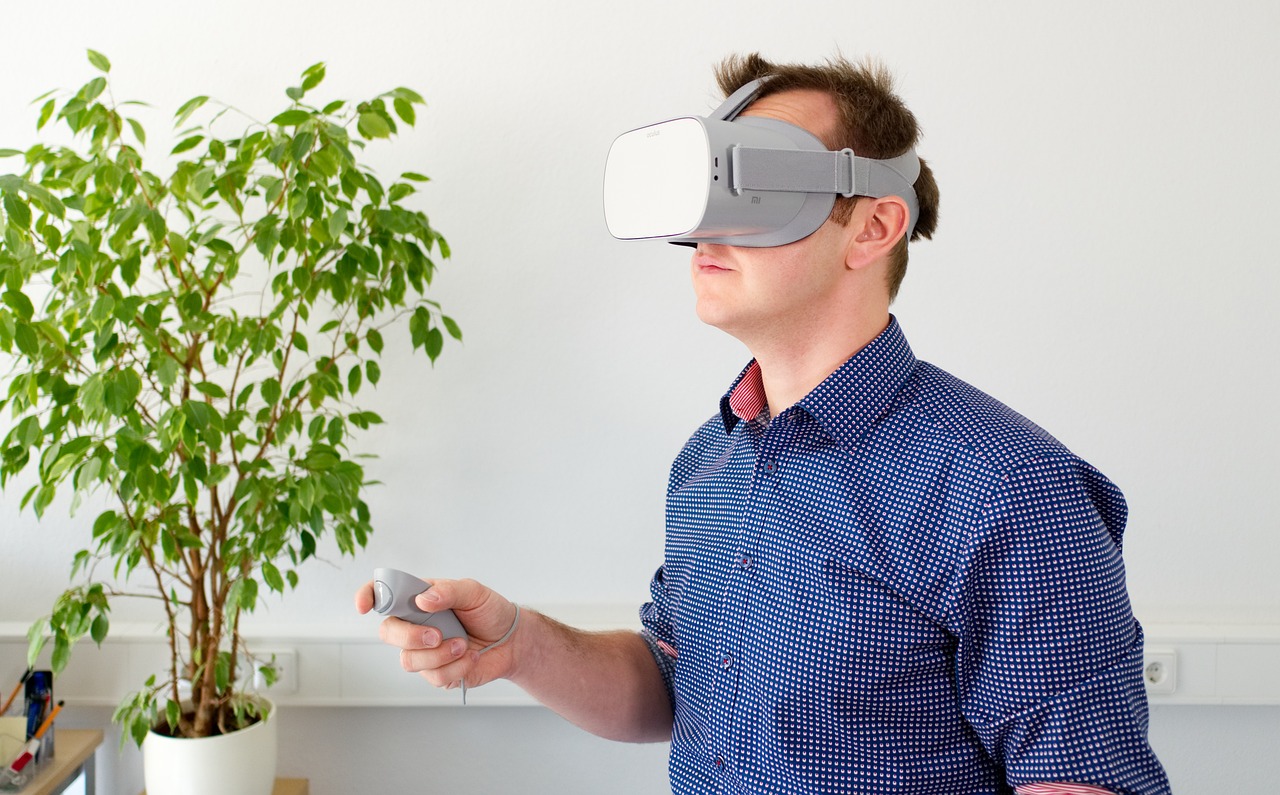
Realistic Combat Scenarios
Imagine stepping into a training environment that feels as real as the battlefield itself. Virtual reality (VR) technology has made this a reality, revolutionizing how soldiers prepare for combat. With VR, combat simulations can replicate the complexities and unpredictability of real-world conditions. This means that soldiers can train in environments that closely mimic the terrains, weather, and challenges they might face during actual missions. It's like having a personal simulator that can throw any scenario at you, from urban warfare to dense jungles, all without the physical risks associated with traditional training methods.
One of the most impressive aspects of VR combat scenarios is their ability to adapt to various situations. For instance, a soldier might find themselves in a simulated ambush, where they must quickly assess their surroundings and make tactical decisions. This level of realism is crucial because it prepares them for the stress and chaos of real combat. The scenarios are not just static; they evolve based on the soldier's actions, creating a dynamic training experience that keeps them on their toes.
Additionally, VR allows for the integration of multiple combat scenarios in a single training session. Instructors can design sequences that transition from one situation to another, such as moving from a stealth operation to an all-out firefight. This kind of training is invaluable as it helps soldiers develop a wide range of skills and responses. The ability to switch gears quickly is essential in combat, and VR prepares them for just that.
Moreover, the technology enables the inclusion of various environmental factors that can impact a soldier's performance. For example, weather conditions like rain or fog can be simulated to test how soldiers adapt their strategies. This immersive experience not only enhances skill acquisition but also builds confidence, as soldiers learn to trust their training and instincts in high-pressure situations.
Instructors can also incorporate real-time data into these simulations, allowing for a more tailored training experience. By using data analytics, they can assess a soldier's performance and provide instant feedback. This immediate response helps in identifying areas for improvement, ensuring that each training session is as effective as possible.
As we look toward the future, the potential for in VR is limitless. With advancements in technology, we can expect even more lifelike experiences that will further enhance military training. The integration of artificial intelligence will play a significant role in this evolution, creating smarter, more adaptable training environments that can challenge soldiers in ways we can only imagine today.
- How realistic are VR combat scenarios compared to real-life training?
VR combat scenarios are designed to closely mimic real-life situations, incorporating various environmental factors and dynamic responses to create a highly immersive experience. - Can VR training be customized for individual soldiers?
Yes, VR systems can be tailored to meet the specific training needs of individual soldiers, allowing for personalized feedback and adaptive learning environments. - What are the benefits of using VR for combat training?
The benefits include enhanced realism, cost-effectiveness, reduced risks associated with live training, and the ability to simulate a wide range of scenarios. - Is VR training as effective as traditional methods?
Studies have shown that VR training can be equally, if not more, effective than traditional methods, particularly in terms of skill retention and decision-making under pressure.
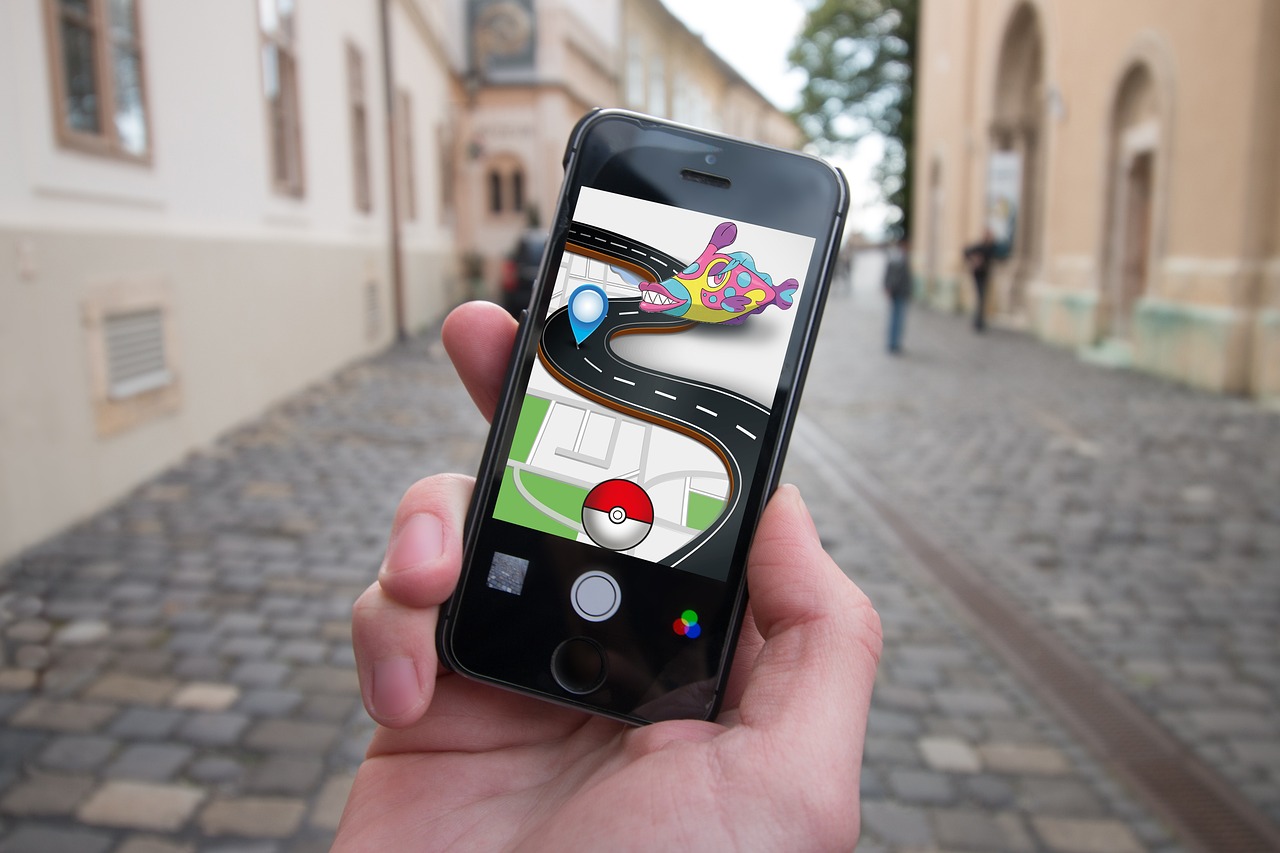
Adaptive Learning Environments
In the realm of military training, powered by virtual reality (VR) are revolutionizing how soldiers acquire and hone their skills. Imagine stepping into a training scenario where the environment not only feels real but also adjusts to your unique learning style and pace. That's the magic of VR! These systems utilize advanced algorithms to analyze a trainee’s performance, providing personalized feedback that can enhance learning outcomes significantly.
For instance, if a soldier struggles with a particular tactical maneuver, the VR system can modify the scenario to focus on that specific skill. This tailored approach not only boosts confidence but also ensures that each training session is as effective as possible. By simulating various combat situations, soldiers can repeatedly practice until they achieve proficiency without the inherent risks of live exercises.
Moreover, the adaptability of VR training extends beyond just individual performance. Instructors can create a wide range of scenarios that can be adjusted in real-time based on the dynamics of the training session. This means that if a group of soldiers is excelling in a particular area, the instructor can ramp up the difficulty level, introducing more complex challenges that require critical thinking and teamwork. The ability to pivot and adapt is crucial in combat scenarios where conditions can change in an instant.
But what does this look like in practice? Picture a soldier engaged in a simulated urban combat environment. As they navigate through the streets, the VR system tracks their movements and decisions. If they take too long to make a choice, the system might introduce an unexpected threat, forcing them to react quickly. This kind of immersive, responsive training prepares soldiers for the unpredictability of real combat, enhancing their readiness and resilience.
Additionally, the integration of artificial intelligence (AI) into these adaptive learning environments takes the experience to a whole new level. AI can generate realistic opponents who learn and adapt to the soldier’s tactics, creating a dynamic training experience that is both challenging and engaging. This not only keeps soldiers on their toes but also encourages them to develop new strategies and improve their decision-making skills under pressure.
In summary, the power of adaptive learning environments in VR is transforming military training. By providing personalized experiences that adapt to the individual needs of each soldier, these systems are not just enhancing skill acquisition; they are fundamentally changing the way we prepare our forces for the complexities of modern warfare.
- What are adaptive learning environments in VR?
Adaptive learning environments in VR are training systems that adjust to the individual learning styles and performance of soldiers, providing personalized feedback and tailored scenarios to enhance skill development. - How does VR improve military training?
VR improves military training by offering immersive, realistic scenarios that allow soldiers to practice skills in a safe environment, while also adapting to their unique learning needs. - Can VR training be customized for specific missions?
Yes, instructors can customize VR training scenarios to align with specific missions or objectives, making the training more relevant and effective. - What role does AI play in VR combat simulations?
AI enhances VR combat simulations by creating dynamic opponents and unpredictable scenarios, making training more realistic and challenging.
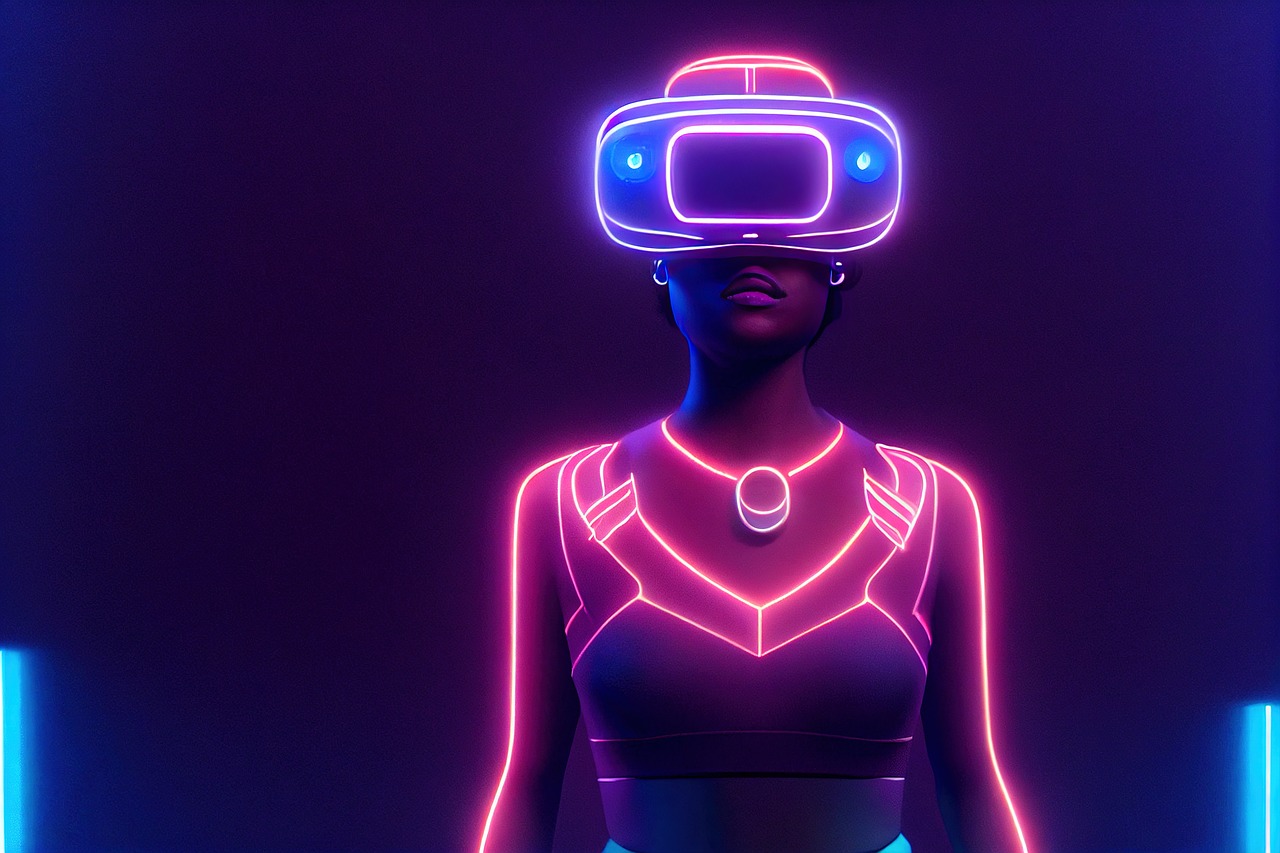
Scenario Customization
One of the most exciting features of virtual reality (VR)
Instructors can modify various elements of a simulation, such as the environment, weather conditions, and even the behavior of enemy forces. This flexibility allows for the creation of scenarios that are as close to reality as possible, which is crucial for effective learning. For instance, a training session could be set in an urban environment with realistic traffic, civilians, and unpredictable weather, simulating the complexities of a real combat zone. Furthermore, scenario customization can cater to different skill levels and learning objectives. A novice soldier may benefit from a controlled environment that gradually increases in complexity, while an experienced operative might require more challenging and unpredictable scenarios to hone their decision-making skills. This adaptive approach not only keeps training engaging but also ensures that each individual receives the attention they need to develop their skills effectively. Additionally, the integration of artificial intelligence (AI) within these customized scenarios adds another layer of sophistication. AI can create dynamic opponents that react in real-time to the soldiers' actions, making the training experience more realistic and challenging. This unpredictability is vital for preparing soldiers to think on their feet and respond effectively to rapidly changing situations. In summary, scenario customization in VR combat simulations represents a significant leap forward in military training. By allowing instructors to create tailored experiences, soldiers can engage in realistic, relevant, and adaptive training that prepares them for the complexities of modern warfare. This not only enhances their skills but also boosts their confidence, ultimately leading to a more prepared and effective military force. Integrating artificial intelligence (AI) into virtual reality (VR) combat simulations is like adding a turbocharger to a high-performance engine—it dramatically enhances the overall experience and effectiveness. Imagine a training environment where the scenarios are not just pre-programmed but dynamically respond to the actions and decisions of the trainees. This is the reality that AI brings to the table, creating a more engaging and lifelike training atmosphere. AI can analyze a soldier's performance in real-time, adjusting the difficulty and complexity of the scenarios based on their skill level. For instance, if a trainee is excelling in a particular combat simulation, the AI can increase the challenge by introducing more adversaries or unexpected obstacles. This adaptive learning approach ensures that soldiers are continually pushed to improve their skills, much like a personal trainer who tailors workouts to push you beyond your limits. Moreover, the integration of AI allows for the creation of dynamically generated opponents. These AI-driven characters can mimic human behavior, making decisions that reflect a range of strategies and tactics. This unpredictability is crucial for preparing soldiers for the chaos of real combat, where opponents are not just targets but thinking entities that can react in unforeseen ways. The result? A training experience that not only hones technical skills but also cultivates critical thinking and adaptability. Another significant advantage of AI in VR combat simulations is its ability to provide comprehensive feedback. After each training session, AI systems can analyze the trainee's decisions, movements, and overall performance, offering personalized insights and recommendations for improvement. This feedback loop is akin to having a coach who reviews game footage with you, pointing out strengths and areas for growth, which is invaluable for skill enhancement. In summary, the integration of AI into VR combat simulations not only enhances realism but also creates a more personalized and effective training experience. As military organizations continue to embrace this technology, we can expect to see soldiers who are better prepared for the unpredictable nature of real-world combat scenarios. When it comes to combat scenarios, the ability to make quick, effective decisions under stress can mean the difference between life and death. That's where Virtual Reality (VR) steps in, offering a platform that immerses soldiers in high-pressure situations that closely mimic real combat environments. Imagine being in a scenario where every second counts, and your choices have immediate consequences. This is not just training; it's a simulation of the adrenaline-fueled chaos of battle. VR technology allows military personnel to face simulated threats and challenges in a safe environment. For instance, a soldier might find themselves in a VR scenario where they must respond to an ambush. The stakes are high, and the pressure is palpable, pushing them to think on their feet. This kind of training is invaluable because it teaches not only the tactical skills necessary for survival but also the psychological resilience needed to handle stress. One significant advantage of VR in stress training is the ability to replicate various stressors. These can range from loud gunfire and explosions to the chaos of injured comrades needing assistance. Each scenario can be tailored to increase in intensity, helping soldiers gradually build their capacity to cope with stress. The experience is akin to a muscle memory workout for the brain, where repeated exposure to stressful situations enhances decision-making skills. Moreover, VR can be programmed to introduce unexpected variables, such as changing enemy tactics or environmental conditions. This unpredictability is crucial because, in real-life combat, situations are rarely static. By facing these dynamic challenges in a controlled setting, soldiers learn to adapt their strategies and make decisions based on incomplete information, mirroring the reality of warfare. To further enhance the effectiveness of stress and decision-making training, VR systems can incorporate real-time feedback. After each simulation, soldiers can receive detailed analyses of their performance, highlighting both strengths and areas for improvement. This feedback loop is essential for continuous learning and skill development. For example, if a soldier hesitates during a critical moment, the system can pinpoint that hesitation and offer strategies to improve their response time in future scenarios. In conclusion, the integration of VR in stress and decision-making training represents a revolutionary shift in how military personnel prepare for combat. It provides a safe yet realistic platform for honing essential skills, allowing soldiers to build confidence and competence. As we continue to embrace technology in military training, the potential for improved outcomes in real-world situations becomes increasingly promising. In today's fast-paced world, cost-effectiveness is key, especially in military training. Traditional methods often come with hefty price tags, from live exercises that require extensive logistics to the costs of ammunition and equipment wear and tear. However, by embracing virtual reality (VR) technology, military organizations are finding innovative ways to cut costs while still delivering high-quality training experiences. Imagine being able to conduct realistic combat drills without the need for physical resources—this is the power of VR! One of the most significant advantages of VR in combat simulation is its ability to streamline resource allocation. By utilizing VR, military training can be conducted in a controlled environment, minimizing the need for actual equipment and supplies. This not only saves money but also allows for more focused and efficient training sessions. For example, instead of transporting troops and gear to a training site, soldiers can engage in immersive scenarios from their base, which drastically reduces logistical costs. Moreover, the long-term savings associated with VR technology are substantial. Consider the following: As the table illustrates, VR training eliminates many of the costs associated with traditional methods. By reducing the need for ammunition and minimizing wear on equipment, military organizations can redirect funds towards other critical areas, such as technology upgrades or personnel development. Furthermore, the flexibility of VR training allows for continuous improvement without the financial burden of scheduling live exercises. Training modules can be updated and modified at a fraction of the cost, ensuring that soldiers are always prepared for the latest combat scenarios. This adaptability not only enhances the relevance of the training but also maximizes the investment in VR technology. In conclusion, the integration of virtual reality into combat simulation represents a revolutionary shift towards more . By minimizing expenses associated with traditional training methods and allowing for better resource allocation, military organizations can ensure that they are not only saving money but also enhancing the quality of their training programs. The future of military training is not just about being effective; it's also about being smart with resources. This article explores the transformative impact of virtual reality (VR) on combat simulation, highlighting advancements in training, technology, and the overall effectiveness of military preparedness. Virtual reality provides immersive training scenarios that significantly enhance the learning experience for soldiers, allowing them to practice in realistic environments without the risks associated with live training exercises. With VR technology, combat simulations can mimic real-world conditions and challenges, enabling soldiers to prepare for a variety of situations they may encounter in actual combat. VR systems can adapt to individual learning styles, providing personalized feedback and adjusting scenarios based on the trainee's performance, ensuring effective skill development. Instructors can customize training scenarios in VR, tailoring them to specific missions or objectives, which enhances the relevance and effectiveness of the training. Artificial intelligence can be integrated into VR simulations to create dynamic opponents and unpredictable scenarios, further enhancing the realism and challenge of combat training. VR can simulate high-stress situations, allowing soldiers to practice decision-making under pressure, which is crucial for effective performance in real combat situations. Implementing VR technology in combat simulations can reduce costs associated with traditional training methods, such as live exercises and ammunition, while still providing high-quality training experiences. By utilizing virtual reality, military organizations can significantly improve . Traditional training methods often require extensive logistical support, including transportation, accommodation, and the use of physical equipment. With VR, these needs are drastically minimized. Imagine a scenario where a unit can conduct a full-scale training exercise without the need to travel to a training ground. This not only saves time but also reduces the overall strain on resources. Furthermore, VR allows for targeted training sessions. Instead of a one-size-fits-all approach, military leaders can identify specific skills that require improvement and allocate resources accordingly. This tailored training ensures that soldiers are prepared for the unique challenges they may face in their roles. To illustrate the impact of VR on resource allocation, consider the following table: In addition, VR enables military organizations to conduct training exercises on-demand. This flexibility allows for training to be scheduled as needed, rather than relying on fixed training dates that may not align with operational readiness. As a result, troops can receive timely training that directly correlates with their current missions. Ultimately, the shift towards virtual reality in combat simulations is not just about saving money; it's about creating a more efficient, effective training environment. By reallocating resources intelligently, military units can focus on what truly matters: preparing their personnel for the complexities of modern warfare. As technology continues to evolve, the future of VR in combat simulation looks promising, with advancements in graphics, interactivity, and realism set to revolutionize military training further. The primary benefits include enhanced realism, cost-effectiveness, and the ability to conduct training in a safe environment without the risks associated with live exercises. VR creates high-stress scenarios that require quick thinking, allowing soldiers to practice decision-making under pressure, which is crucial for real combat situations. Studies suggest that VR training can be equally, if not more, effective than traditional methods, especially in terms of skill retention and engagement. This article explores the transformative impact of virtual reality (VR) on combat simulation, highlighting advancements in training, technology, and the overall effectiveness of military preparedness. Virtual reality provides immersive training scenarios that significantly enhance the learning experience for soldiers, allowing them to practice in realistic environments without the risks associated with live training exercises. With VR technology, combat simulations can mimic real-world conditions and challenges, enabling soldiers to prepare for a variety of situations they may encounter in actual combat. VR systems can adapt to individual learning styles, providing personalized feedback and adjusting scenarios based on the trainee's performance, ensuring effective skill development. Instructors can customize training scenarios in VR, tailoring them to specific missions or objectives, which enhances the relevance and effectiveness of the training. Artificial intelligence can be integrated into VR simulations to create dynamic opponents and unpredictable scenarios, further enhancing the realism and challenge of combat training. VR can simulate high-stress situations, allowing soldiers to practice decision-making under pressure, which is crucial for effective performance in real combat situations. Implementing VR technology in combat simulations can reduce costs associated with traditional training methods, such as live exercises and ammunition, while still providing high-quality training experiences. By utilizing VR, military organizations can allocate resources more efficiently, focusing on critical training needs without the extensive logistical support required for live training. Investing in virtual reality technology not only enhances training but also leads to significant for military organizations. By minimizing the wear and tear on physical equipment, VR reduces the need for costly repairs and replacements. For instance, traditional live-fire exercises require substantial resources, including ammunition, fuel, and maintenance for vehicles and weapons. In contrast, VR training eliminates these expenses, allowing for a more sustainable approach to military readiness. Moreover, the costs associated with travel and accommodation for personnel to participate in live training exercises can add up quickly. With VR, soldiers can train at their home bases, significantly cutting down on these expenses. The table below illustrates a comparison of costs between traditional training methods and VR: In the long run, the savings generated from using VR can be redirected towards enhancing training programs, acquiring better technology, or even improving personnel welfare. This reallocation of funds can lead to a more robust military force equipped to handle modern challenges. It’s like investing in a high-quality tool that not only serves its purpose effectively but also lasts longer and saves you money in the process. Why spend more when you can achieve the same, or even better, results for less? As technology continues to evolve, the future of VR in combat simulation looks promising, with advancements in graphics, interactivity, and realism set to revolutionize military training further. The landscape of virtual reality (VR) in combat simulation is on the brink of a significant evolution. As technology continues to advance at a breakneck pace, the future promises even more immersive and effective training experiences for military personnel. Imagine walking into a training facility where the line between reality and simulation blurs to the point where you can hardly tell the difference. That's not just a dream—it's becoming a reality. With advancements in graphics, interactivity, and realism, the next generation of VR combat simulations is set to revolutionize military training. One of the most exciting prospects is the enhancement of graphical fidelity. As VR hardware improves, the visual quality of simulations will reach levels that make environments almost indistinguishable from real life. This means that soldiers can train in hyper-realistic settings that accurately replicate the terrains and conditions they might face in the field. Coupled with high-resolution displays and advanced motion tracking, the experience will be so immersive that the brain may respond as if it were a genuine combat situation. Moreover, interactivity will take a giant leap forward. Future VR systems are expected to incorporate more advanced haptic feedback technologies, allowing users to feel the impact of their actions in real-time. Imagine being able to feel the recoil of a weapon or the vibrations of an explosion—this sensory feedback can significantly enhance the training experience, making it more engaging and realistic. Soldiers will not only see and hear the action but will also physically experience it, leading to better retention of skills and strategies. Artificial intelligence (AI) will also play a pivotal role in the future of VR combat simulations. With the integration of AI, training scenarios can become more dynamic and unpredictable. Instead of facing scripted opponents, soldiers will encounter adversaries that adapt to their strategies and tactics, simulating the chaos of real combat. This level of unpredictability will prepare soldiers to think on their feet and make quick decisions, crucial skills in high-stress environments. Additionally, we can expect to see a greater emphasis on collaborative training experiences. Future VR systems may allow multiple users to join a single simulation, regardless of their physical location. This means that troops from different units or even countries can train together in a shared virtual environment. Such collaboration can foster better teamwork and communication skills, essential components for successful military operations. Ultimately, the future of VR in combat simulation is not just about technology; it's about creating a holistic training ecosystem that prepares soldiers for the complexities of modern warfare. By integrating cutting-edge advancements and focusing on realistic, immersive experiences, military organizations can ensure that their personnel are not just trained but are battle-ready. The next few years will undoubtedly bring exciting developments that will reshape how we think about military training. VR allows for immersive, risk-free training scenarios that can be tailored to individual needs, enhancing skill retention and decision-making under pressure. AI creates dynamic and unpredictable scenarios, allowing soldiers to face adaptive opponents, which improves their ability to respond to real-world challenges. While VR offers numerous advantages, it is best used as a complementary tool alongside traditional methods to provide a comprehensive training experience. The future looks promising with advancements in graphics, interactivity, and AI, leading to even more realistic and effective training environments. Virtual reality combat simulation is a training method that uses VR technology to create immersive environments where soldiers can practice various combat scenarios. This allows them to experience realistic situations without the risks associated with live training exercises. VR enhances training experiences by providing soldiers with lifelike scenarios that help them develop their skills in a safe environment. This immersive approach allows for better retention of information and skills, as trainees can engage in realistic interactions and challenges. Absolutely! VR systems can be designed to adapt to each trainee's learning style, offering personalized feedback and adjusting scenarios based on performance. This tailored approach ensures that each soldier gets the most effective training suited to their needs. Scenario customization allows instructors to tailor training exercises to specific missions or objectives, making the training more relevant and effective. This means soldiers can practice exactly what they need to prepare for real-world situations. Integrating AI into VR combat simulations creates dynamic opponents and unpredictable scenarios, making training more challenging and realistic. This helps soldiers improve their decision-making skills and adaptability in high-pressure situations. Yes, implementing VR technology can significantly reduce costs associated with traditional training methods, like live exercises and ammunition. It allows military organizations to provide high-quality training while minimizing expenses related to logistics and resources. Investing in VR technology can lead to long-term savings by reducing wear and tear on equipment, as well as cutting down costs related to travel and accommodation for training exercises. This makes VR a financially smart choice for military organizations. The future of VR in combat simulation looks incredibly promising! As technology evolves, we can expect advancements in graphics, interactivity, and realism that will further revolutionize military training, making it even more effective and engaging.
Scenario customization refers to the ability to modify training exercises in virtual reality to meet specific mission requirements and training objectives.
It enhances the relevance of training by simulating real-world conditions and allows for personalized learning experiences tailored to individual skill levels.
Yes, AI can create dynamic opponents and unpredictable scenarios, adding realism and complexity to the training experience.
Benefits include cost-effectiveness, reduced logistical needs, enhanced realism, and the ability to practice in a safe environment without the risks associated with live training.
Integration of AI
AI enhances combat training by creating dynamic scenarios that adapt to the trainee's skill level, providing real-time feedback, and simulating unpredictable enemy behavior.
VR offers immersive training experiences without the risks of live exercises, cost savings, and the ability to simulate a wide variety of combat scenarios.
While VR training is highly effective, it is best used in conjunction with live exercises to provide a comprehensive training program.
The future looks promising with advancements in technology that will continue to improve graphics, interactivity, and realism in simulations.
Stress and Decision-Making Training
VR training immerses soldiers in realistic scenarios that can be tailored to individual needs, whereas traditional methods often rely on static drills and exercises.
While VR training is a powerful tool, it is best used in conjunction with live training to provide a comprehensive training experience.
VR training helps soldiers develop resilience and confidence by exposing them to high-stress situations in a controlled environment.
Yes, VR training can reduce costs associated with traditional training methods, such as the use of live ammunition and logistical support.
Cost-Effective Solutions
Cost Factor
Traditional Training
VR Training
Ammunition Costs
High
Nil
Equipment Wear and Tear
Significant
Minimal
Travel Expenses
High
Low
Logistical Support
Extensive
Limited

Resource Allocation
Traditional Training Method
Resources Required
VR Training Method
Resources Required
Live Exercises
High (travel, accommodation, ammunition)
Virtual Simulations
Low (equipment maintenance, software updates)
Logistical Support
Extensive (transportation, personnel)
Self-Contained Training
Minimal (setup and monitoring)

Long-Term Savings
Training Method
Estimated Cost per Session
Notes
Live Training Exercises
$15,000
Includes ammunition, travel, and accommodation
VR Training Sessions
$2,000
Minimal costs, primarily software and equipment maintenance
VR allows for immersive training experiences, reduces costs, and enables soldiers to practice in safe environments.
By simulating high-stress scenarios, soldiers can practice making quick decisions under pressure.
While both have their advantages, VR training can provide unique benefits such as safety and cost-effectiveness.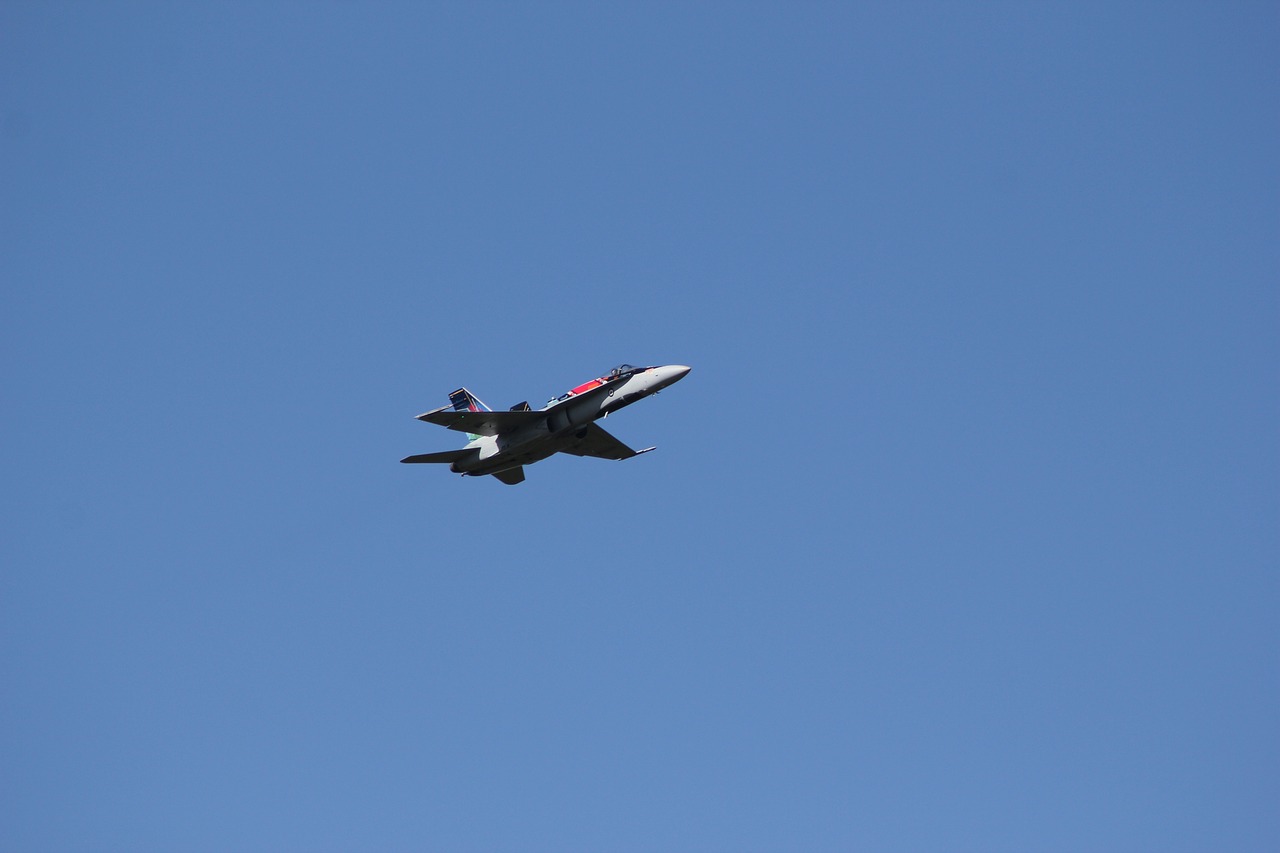
Future Developments in VR Combat Simulation
Frequently Asked Questions

















